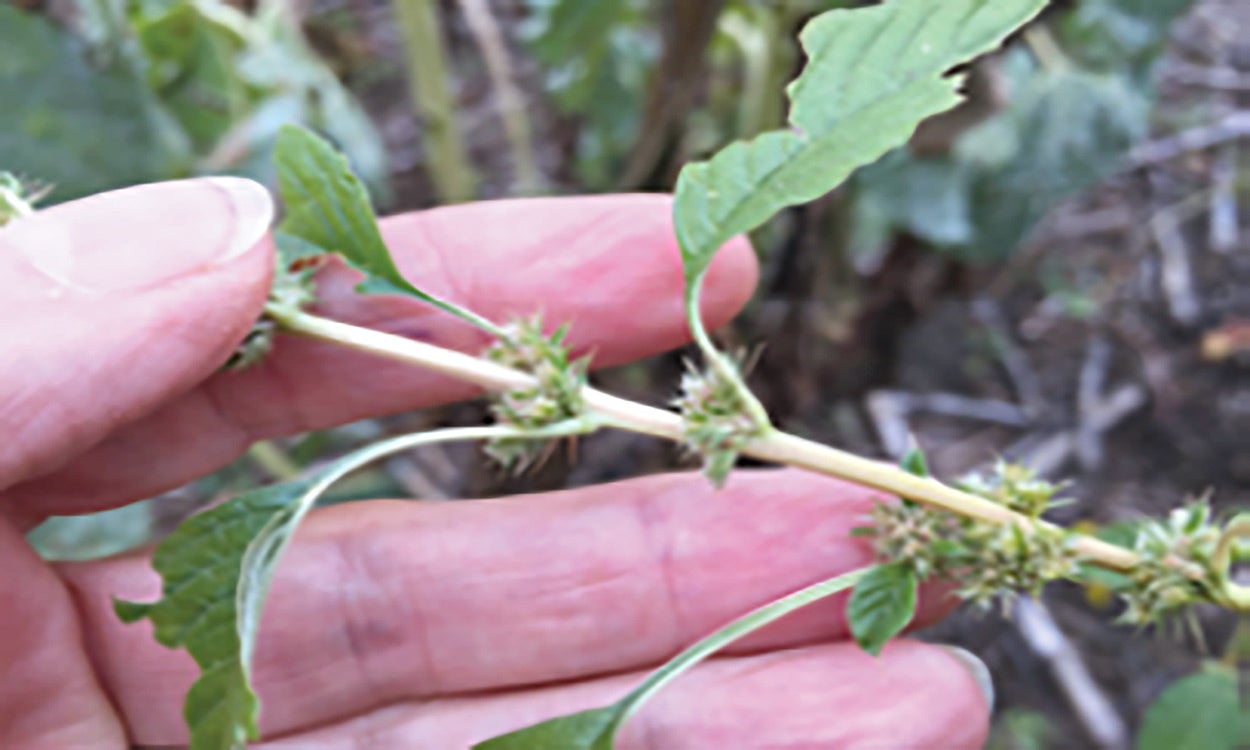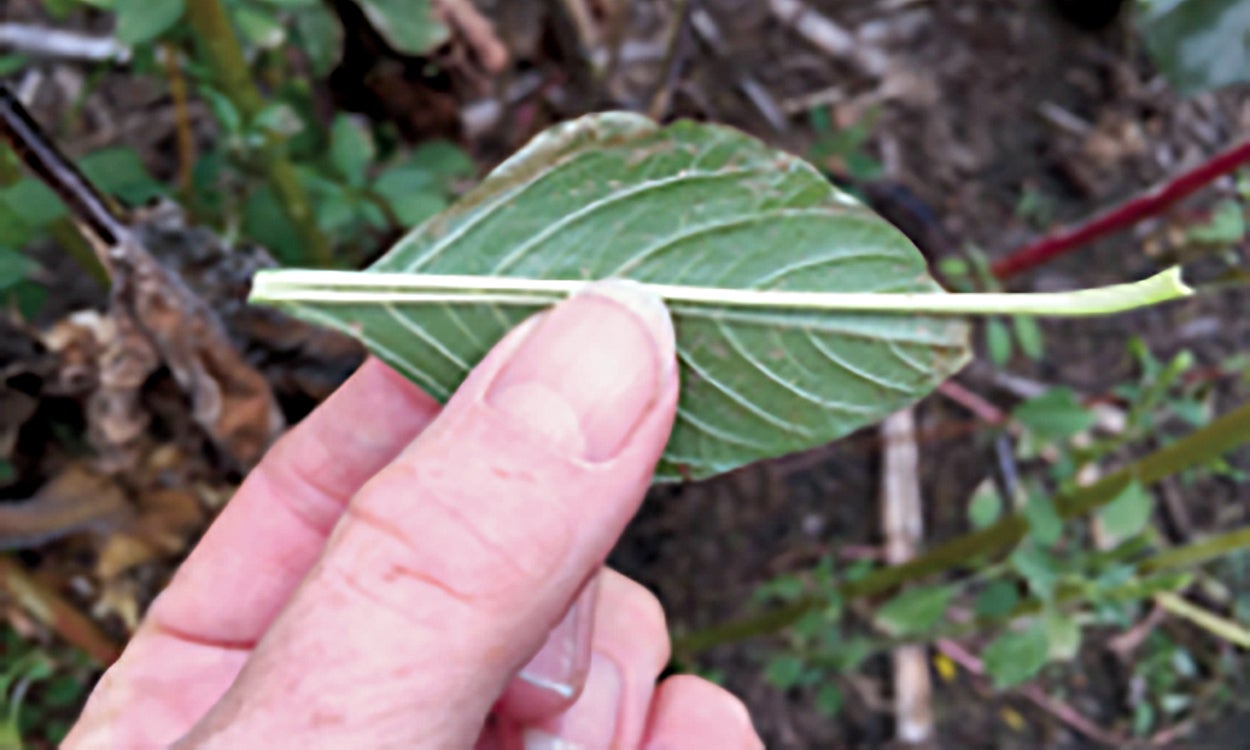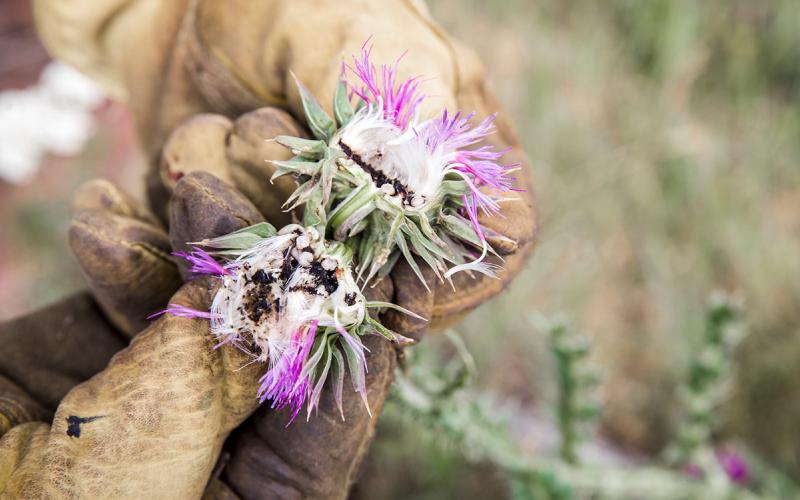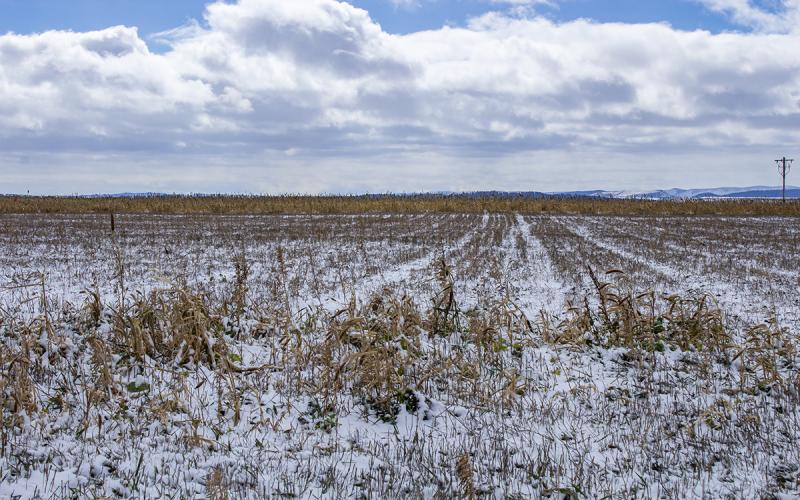Palmer amaranth infestations are not new for South Dakota farmers, unfortunately. Recently reported infestations have come from Brookings, Charles Mix, and Hyde County. These infestations are of concern because the weed exhibits aggressive growth and seed production, and it can be resistant to multiple herbicide groups. Since many of the Palmer amaranth infestation sources are largely unknown, the herbicide resistance profile of each infestation is largely unknown as well. Ultimately, these traits make Palmer amaranth very difficult to control. While the infestation has already occurred, management tactics can still be implemented to try to eradicate the weed from fields.
Identification
Palmer amaranth is easily identifiable in the reproductive stage when the long, sharp bracts are present on the seed head (Figure 1). However, when plants reach this stage, seed production has likely already occurred. Identifying Palmer amaranth in the vegetative stage is likely the best way to ensure that plants are controlled before seeds are produced. The easiest way to identify the plant in the vegetative stage is by measuring the length of the petiole, which is the secondary stem that connects the leaf to the main stem. If the petiole is longer than the leaf, the plant is likely Palmer amaranth (Figure 2). More information on identifying the pigweed species can be found in our article, Vegetative Identification of Palmer Amaranth, Waterhemp, and Redroot Pigweed.
Bracts

Petioles

Removal
Mechanical removal of the entire plant is likely the best way to control large Palmer amaranth. Ideally, the entire above and below ground plant material should be removed to ensure new shoots do not initiate from the remaining plant material. Plants should be removed from the field and destroyed. Removing the plants from the field ensures the excised plants do not re-root and that produced seeds do not return to the soil seedbank.
Herbicides
Many herbicides will not effectively control large, flowering Palmer amaranth plants. However, spot spraying can be implemented after the large plants have been mechanically excised and new shoots have been initiated from the base of the stem. Herbicides, such as 2,4-D and paraquat, would likely be good spot spraying candidates. Caution should be exercised when spraying these two herbicides, as off-target injury can occur to sensitive plants nearby.
Harvest
The Palmer amaranth-infested fields should be harvested last! If the infested fields are harvested first, seeds from the Palmer amaranth plants can become lodged within the combine and be dislodged later in other fields. This could lead to an expedited spread of Palmer amaranth across fields and the landscape.
Additionally, combines need to be thoroughly cleaned after harvesting infested fields to ensure that lodged seeds do not become dislodged later. The plant matter that is cleaned from the combine should be contained and destroyed to ensure any viable seeds do not emigrate to adjacent fields. This practice should be utilized to minimize the spread of all weed seeds as well.
Crop Rotation
Crop rotation is essential for effectively managing weeds, not just Palmer amaranth. Small grains should be part of the rotation in Palmer amaranth infested fields. The small grains are planted before Palmer amaranth germinates, so there is potential that the established small grain crop can provide early season competition. Since the small grains are harvested before the growing season is over, the fallow area can be managed for later germinating Palmer amaranth and escapes. Crops that have limited options for weed control (for example, sunflower) should be avoided in the Palmer amaranth-infested fields.
Report
Palmer amaranth infestations should always be reported. While the infestations are not a burden that most want to bear, the information needs to be relayed to other farmers in the area so they can be on the lookout. If the infestations go unreported, Palmer amaranth could start to spread across the state. Kochia and waterhemp already have a foothold in South Dakota and prove every growing season to be hard to control. We do not need to include Palmer amaranth as a widespread, hard-to-control weed in South Dakota!


